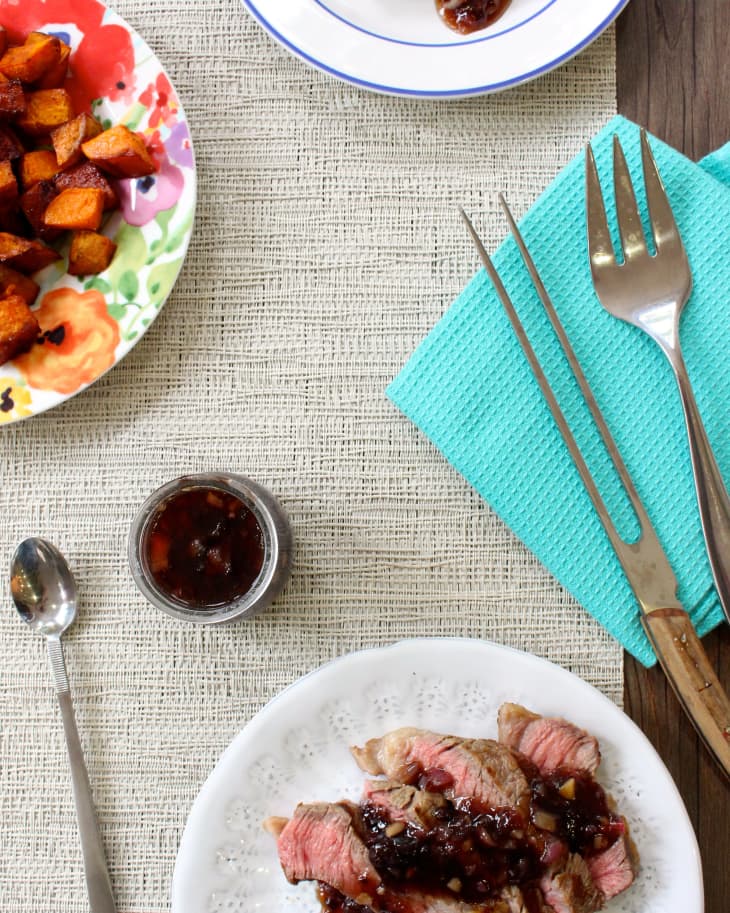Jam: The New Steak Sauce
As someone who doesn’t eat peanut butter or bread, jam has little significance in my life. Yes, I’ve eaten the occasional dollop mixed with yogurt or oatmeal. Or straight off the spoon — because you only live once. But to risk sounding like a total hater of preserved berries, jam just isn’t my jam.
But jam has a new trick for me these days and this is bringing it back to my table.
This all changed when I needed to knock bottled sauces off my dietary “yes” list, avoiding sodium and processed foods. My steaks went bare. My chicken wings wore only skin. And my minced meat lettuce cups sat undressed in veggie shells. All longing for something silky, savory, and you guessed it, slightly sweet, to cover them up.
That’s where jam reentered my life and kitchen. With a little help from vinegar, spices, and minced onion and garlic, I realized that jam quickly transforms from a morning condiment to a dinner showstopper. Think steak sauce, marinade, or drizzly topping for those lettuce cups — it’s the ultimate day-to-night accessory for your meat.
How to Make Jam Steak Sauce
The equation for one cup of sauce is simple: Cook a little minced garlic and onion with a teaspoon or two of oil in a saucepan for a few minutes. Add a 10-ounce jar of jam, a splash of vinegar (about 2 teaspoons), and a few pinches of spice (like garlic powder, black pepper, and paprika). Let it cook on low heat for about 15 minutes. Taste and adjust with more vinegar and spices as needed. Then baste, slather, and sauce.
Tasty Jam Combinations to Try
Best of all, depending the protein or dish, jam sauces taste delicious no matter how you mix and match different flavors of berry and different spices. Or really anything else hiding in the fridge—like fresh herbs and those lesser used condiments (hello horseradish, Worcestershire, and mustard!).
Here are some of my favorite combinations: dark berry, balsamic vinegar, and garlic powder for steaks. Apricot, apple cider vinegar, and cardamom for pork. Orange marmalade, rice wine vinegar, and ginger for chicken (or even fish).
So toss the bottled sauce. Forget about the toast. And the next time you need something for that steak, look no further than jam.
Old Ingredients, New Tricks
As someone who constantly makes over dishes for dietary and health needs, I’m used to using total creative license when it comes to food. And the good news is we already live in a culinary world where zucchinis can be noodles, beets can be chips, and cucumbers can act like baguettes. So let me be your guide as we dust off some standard items from the produce aisle and give them a chance to show off a little. It’s an exercise in recipe liberation (not limitations) that will not only lighten up those eating habits but also give new life to old favorites.
So whether you’re trying to ditch the gluten, sugar, or just a pant size, let’s forget about pledging to take on a new diet. And let’s pledge instead to break some rules and teach a handful of old ingredients some new tricks.
